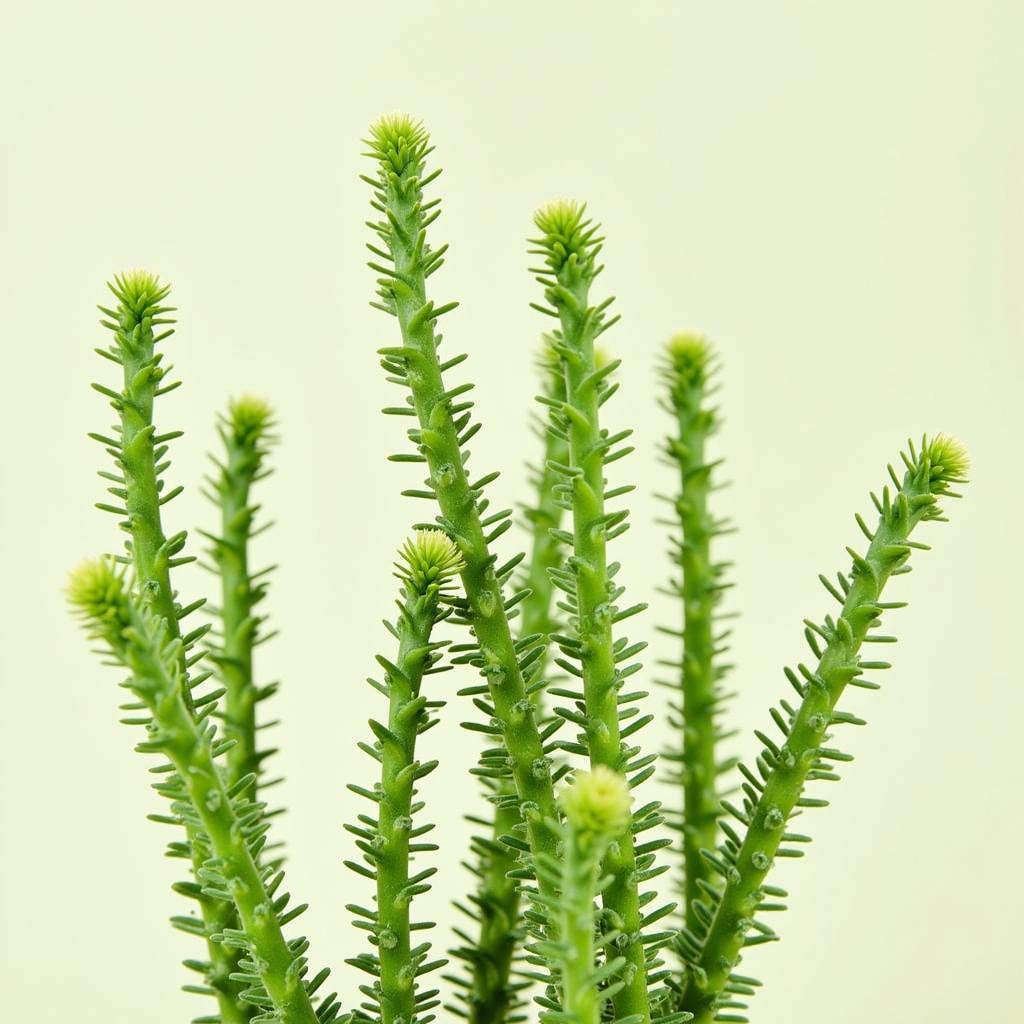The Mother of Thousands, a succulent known for its impressive propagation, is a popular houseplant. But how do you properly care for this unique plant? This guide will walk you through the essential aspects of Mother of Thousands care, from soil and light requirements to propagation and potential pests. We’ll also address some common questions and concerns about this fascinating succulent.
Understanding Mother of Thousands
Mother of Thousands, scientifically known as Kalanchoe daigremontiana, is a fascinating succulent native to Madagascar. Its distinctive, upright stems grow up to 3 feet tall and are adorned with fleshy, triangular leaves. These leaves are the heart of the plant’s remarkable propagation, as they produce numerous small plantlets along their edges. These plantlets, also known as “bulbils”, easily detach and take root, making Mother of Thousands a prolific propagator.
Mother of Thousands Care Essentials
Light
Mother of Thousands thrive in bright, indirect light. They prefer a location with at least six hours of sunlight daily, ideally with a few hours of direct sunlight in the morning. Avoid placing them in direct afternoon sun, which can scorch their leaves.
Soil
This succulent thrives in well-draining soil that allows excess water to escape. A cactus potting mix or a mixture of potting soil, perlite, and sand is ideal. Ensure the soil doesn’t retain moisture for too long, as this can lead to root rot.
Watering
Mother of Thousands are drought-tolerant and prefer to be watered only when their soil is completely dry. Overwatering can lead to root rot, so it’s crucial to allow the soil to dry out completely between waterings.
Temperature
Mother of Thousands prefer warm temperatures between 65°F and 75°F (18°C and 24°C). They can tolerate higher temperatures during the summer months but should be kept in a protected spot during winter when temperatures drop below 50°F (10°C).
Humidity
Mother of Thousands are adaptable to various humidity levels and thrive in dry environments. They can tolerate a moderate level of humidity but don’t require it.
Fertilizer
While Mother of Thousands don’t require heavy fertilization, a balanced liquid fertilizer diluted to half strength can be applied once a month during the growing season (spring and summer).
Propagation of Mother of Thousands
The ease of propagation is one of the reasons Mother of Thousands are popular. You can easily propagate these plants by:
1. Plantlets: These are the most common method. Gently detach the plantlets from the parent plant’s leaves. Allow them to dry for a few days before planting them in well-draining soil.
2. Leaf Cuttings: Cut a healthy leaf from the parent plant. Allow the cut end to callous over for a few days before planting it in well-draining soil.
3. Stem Cuttings: Cut a section of stem with several leaves attached. Allow the cut end to callous over before planting it in well-draining soil.
Common Problems and Pests
Root Rot: This is the most common problem for Mother of Thousands. It’s caused by overwatering, leading to soggy soil. To prevent this, allow the soil to dry completely between waterings.
Pests: Mother of Thousands are relatively resistant to pests. However, they can be susceptible to mealybugs, aphids, and scale insects.
“Expert Insight”
“Remember, overwatering is the biggest enemy of Mother of Thousands,” says Dr. Emily Carter, a renowned botanist and succulent specialist. “Ensure the soil is completely dry before watering to prevent root rot, which is often fatal.”
“Expert Insight”
“Don’t be afraid to propagate your Mother of Thousands,” advises Mr. John Lawson, a veteran gardener and succulent enthusiast. “It’s surprisingly easy, and you’ll have plenty of new plants to share with friends and family.”
Frequently Asked Questions
Q1. How often should I fertilize my Mother of Thousands?
A1. You can fertilize once a month during the growing season with a diluted balanced liquid fertilizer.
Q2. Can I grow Mother of Thousands outdoors?
A2. Yes, they can grow outdoors in warm climates with well-draining soil and ample sunshine.
Q3. What are the signs of overwatering?
A3. Wilted, yellowing, or mushy leaves, along with a foul odor from the soil, are signs of overwatering.
Q4. What are the signs of underwatering?
A4. The leaves will begin to shrivel and become leathery, and the soil will be completely dry.
Q5. Can I grow Mother of Thousands in a hanging basket?
A5. Yes, they can be grown in hanging baskets, allowing their cascading stems and plantlets to dangle attractively.
Q6. Are Mother of Thousands toxic to pets?
A6. Yes, they are toxic to pets and can cause stomach upset, diarrhea, and lethargy.
Q7. Can I prune my Mother of Thousands?
A7. Yes, pruning can help control the plant’s growth and encourage bushier growth.
Mother of Thousands is a rewarding and unique plant to cultivate. With proper care, these succulents can thrive, offering a visual delight with their dramatic stems and abundance of plantlets. Remember, keep the soil dry between waterings, provide adequate light, and enjoy the beauty of this remarkable plant.
For more information about enclosed car trailers, and other helpful car repair and maintenance resources, be sure to explore the DiagXcar website!
Need help? Contact us via WhatsApp: +1(641)206-8880, Email: cardiagtechworkshop@gmail.com or visit our shop at: 276 Reock St, City of Orange, NJ 07050, United States. We offer 24/7 customer support!


